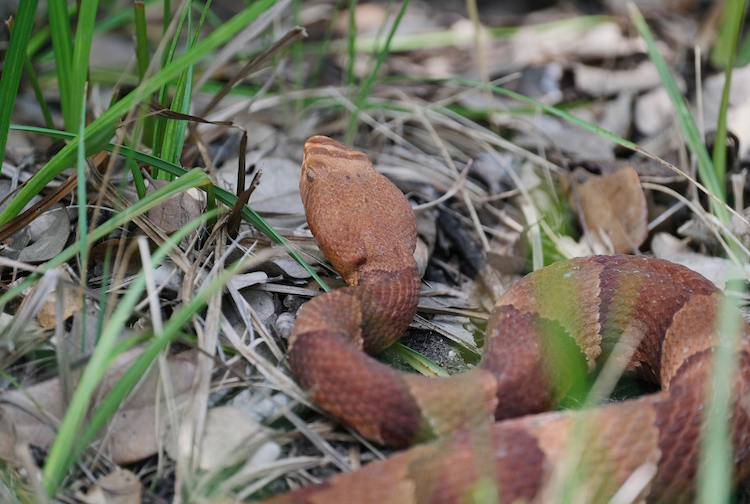
Summer Safety: Snake bite warning signs and first aid
About five individuals die from venomous snake bites each year in the United States, but health experts say that number would be much higher if people did not seek medical care.
June 13, 2023 Copperhead snakes are the most common venomous snake found in the Richmond area. (Getty Images)
Copperhead snakes are the most common venomous snake found in the Richmond area. (Getty Images)
By Sara McCloskey
With longer days filled with sun and fun, the summer is the perfect time to explore the outdoors. But sometimes, those adventures can take a turn — testing our ability to act during an emergency.
Around 7,000 to 8,000 people are bitten by venomous snakes in the United States each year. About five of those individuals die from their injuries, but the Centers for Disease Control and Prevention says that number would be much higher if people did not seek medical care.
To ensure you have the resources you need in case of an emergency, VCU Health News’ Summer Safety Series has tips from the Virginia Poison Center on snake bite care and prevention. The Virginia Poison Center at VCU Health sees or consults about 175 cases of snake bites each year. It’s a free 24/7 emergency service that assists residents and providers in central and eastern Virginia.
What are the signs and symptoms of a snake bite?
Symptoms may vary depending on the snake, but someone who has been bitten by a venomous snake may have puncture marks at the wound, as well as redness, bruising or swelling around the bite. They may also experience:
- Rapid heart rate, weak pulse or low blood pressure
- Nausea and vomiting
- Labored breathing
- Disturbed vision
- Numbness or tingling around the face/limbs
- Metallic, mint or rubber taste in the mouth
How do I know if a snake is venomous?
Virginia is home to more than 30 snake species, several of which are venomous: copperhead, timber rattlesnake, canebrake rattlesnake and cottonmouth (water moccasin). The most common one found in the Richmond area is the copperhead. In North America, most venomous snakes have vertical pupils, heat sensing pits near their nostrils and fangs.
If you encounter a snake, the best thing to do is to get away from it. Do not pick up or try to trap the snake. You should never handle a venomous snake, including a dead one or its decapitated head.
What do I do if someone I’m with or I’ve been bitten?
If you or someone you’re with are bitten by a venomous snake, you should get to an emergency room as soon as possible. While it might be difficult, stay calm and take note of the snake’s color, shape and any markings you see. Also, make a mark on the leading edge of tenderness/swelling on the skin and write the time alongside it. This is all helpful information for first responders and providers when it comes to identifying the type of snake and the best treatment options.
First aid should be applied while waiting for medical professionals:
- Lay or sit down in a neutral position. Moving around a lot will make the venom spread faster through the body.
- Remove jewelry, such as rings or watches, and tight clothing before swelling starts.
- Wash the bite with soap and water.
- Cover it with a clean, dry bandage.
What should I NOT do after a snake bite?
Do not wait for symptoms to appear if you or someone you are with are bitten by a snake. Get medical attention immediately.
Additionally, applying the correct first aid is critical after a snake bite, but there are some measures that could do more harm than good.
Do not do any of the following:
- Do not slash the wound with a knife or cut it in any way.
- Do not try to suck out the venom.
- Do not apply a tourniquet.
- Do not apply ice or immerse the wound in water.
- Do not take pain relievers, such as aspirin, ibuprofen or naproxen.
How can I prevent snake bites?
Snakes are generally nonaggressive and secretive creatures. They tend to be found in brushy, wooded, overgrown or rocky areas where they can hide and search for their prey.
When exploring these areas, look carefully before putting your feet down or placing your hand near any covered spots. Wearing leather ankle-high boots or leather work gloves can also serve as an added layer of protection. Do not provoke a snake if you see one, as most bites are defensive.



